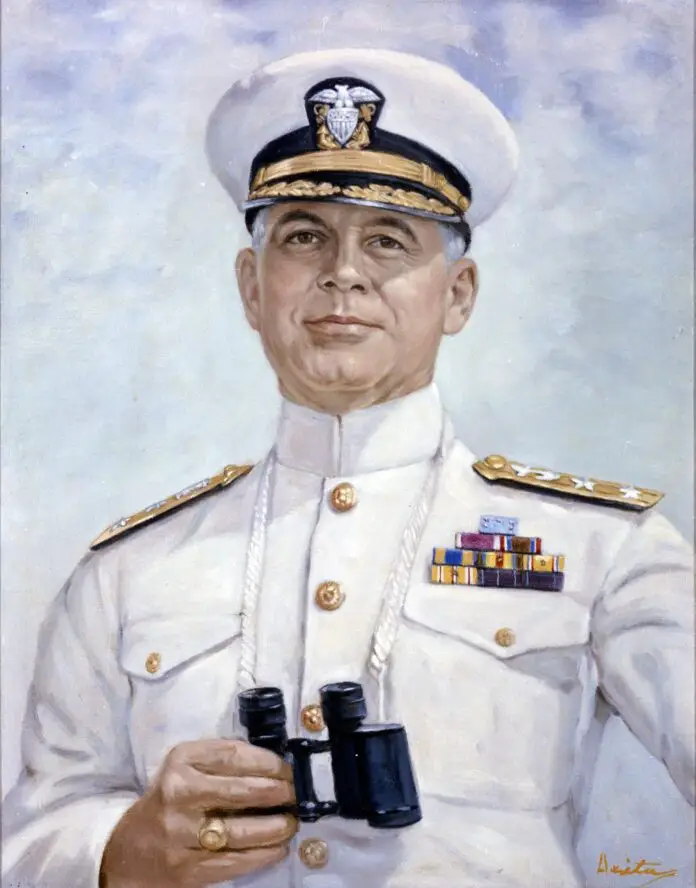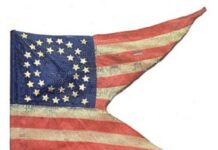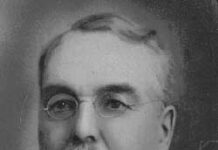December 7, 1941, as President Franklin Roosevelt first said, is a day that went down in infamy.
Admiral Isaac Campbell Kidd
In addition to launching the United States into World War II, it marked the day that the first Admiral Isaac Campbell Kidd was killed. He was the highest-ranking casualty at Pearl Harbor, and the first US Navy flag officer killed in action in the War. He was also the first killed in action against any foreign enemy. He was posthumously awarded the Medal of Honor.
That is only part of the story of a man who made history in so many different ways.
Referred to as the first Admiral Kidd, because his son was Admiral Isaac Campbell, Jr. and his grandson, Captain Isaac Campbell II. The three officers gave 102 years of service to the US Navy.
Admiral Kidd was on the bridge of the USS Arizona when the Japanese attacked Pearl Harbor. He was Commander of Battleship Division One and Chief of Staff and Aide to the Commander of Battleship Battle Force. At first knowledge of the attack, Admiral Kidd rushed to the bridge of his flagship, the USS Arizona, serving as senior officer present afloat when the ship blew up from a magazine explosion.
It was a direct bomb hit on the bridge which killed the Admiral. His body has never been recovered and he is still listed as Missing in Action. Navy salvage divers located his Naval Academy ring fused to a bulkhead on the ship’s bridge. The ring, together with a trunk with his personal memorabilia was found in the wreckage and is now in the USS Arizona Memorial museum.
Admiral Kidd was born in March 1884 in Cleveland, Ohio, and entered the Naval Academy at Annapolis in 1902, graduating four years later and commissioned an ensign in 1908 while participating in the 1907-1909 Great White Fleet Cruise. At that time he was serving aboard the Battleship New Jersey. He served on other ships as well before becoming Flag Secretary to the Commander in Chief of the Pacific Fleet and was also an instructor at the Naval Academy.
During the first World War, the young officer served as executive officer on the battleship Utah, and later became Captain of the Port at Cristobal, in the Panama Canal Zone. As a captain he was chief of staff to the Commander Base Force United States Fleet, served in the Bureau of Navigation in Washington, D.C. and was commander of Destroyer Squadron One, Scouting Force before the nation entered into World War II.
Twelve days after the Admiral’s death aboard the USS Arizona, his oldest son, Isaac Campbell, Jr., graduated from the Naval Academy and was commissioned an ensign.
Three ships have been named for the Medal of Honor recipient, a Fletcher-class destroyer, Kidd (DD-661), commissioned just two years after his death, the Kidd (DDG-993) the lead ship of four Kidd-class destroyers, and an Arleigh Burke-class guided missile destroyer, Kidd (DDG-100) which was commissioned in 2007.
Among his numerous awards in addition to the Medal of Honor, Rear Admiral Kidd received the World War I Victory Medal as well as posthumously receiving the World War II Victory Medal.
His citation reads
CITATION
For conspicuous devotion to duty, extraordinary courage and complete disregard of his own life, during the attack on the Fleet in Pearl Harbor, by Japanese forces on 7 December 1941. Rear Admiral Kidd immediately went to the bridge and, as Commander Battleship Division One, courageously discharged his duties as senior officer present afloat until the U.S.S. Arizona, his flagship, blew up from magazine explosions and a direct bomb hit on the bridge which resulted in the loss of his life.
More Stories on recipients of the Medal of Honor HERE
New Jersey Recipient of the Medal of Honor for actions on 7 December 1941 HERE




